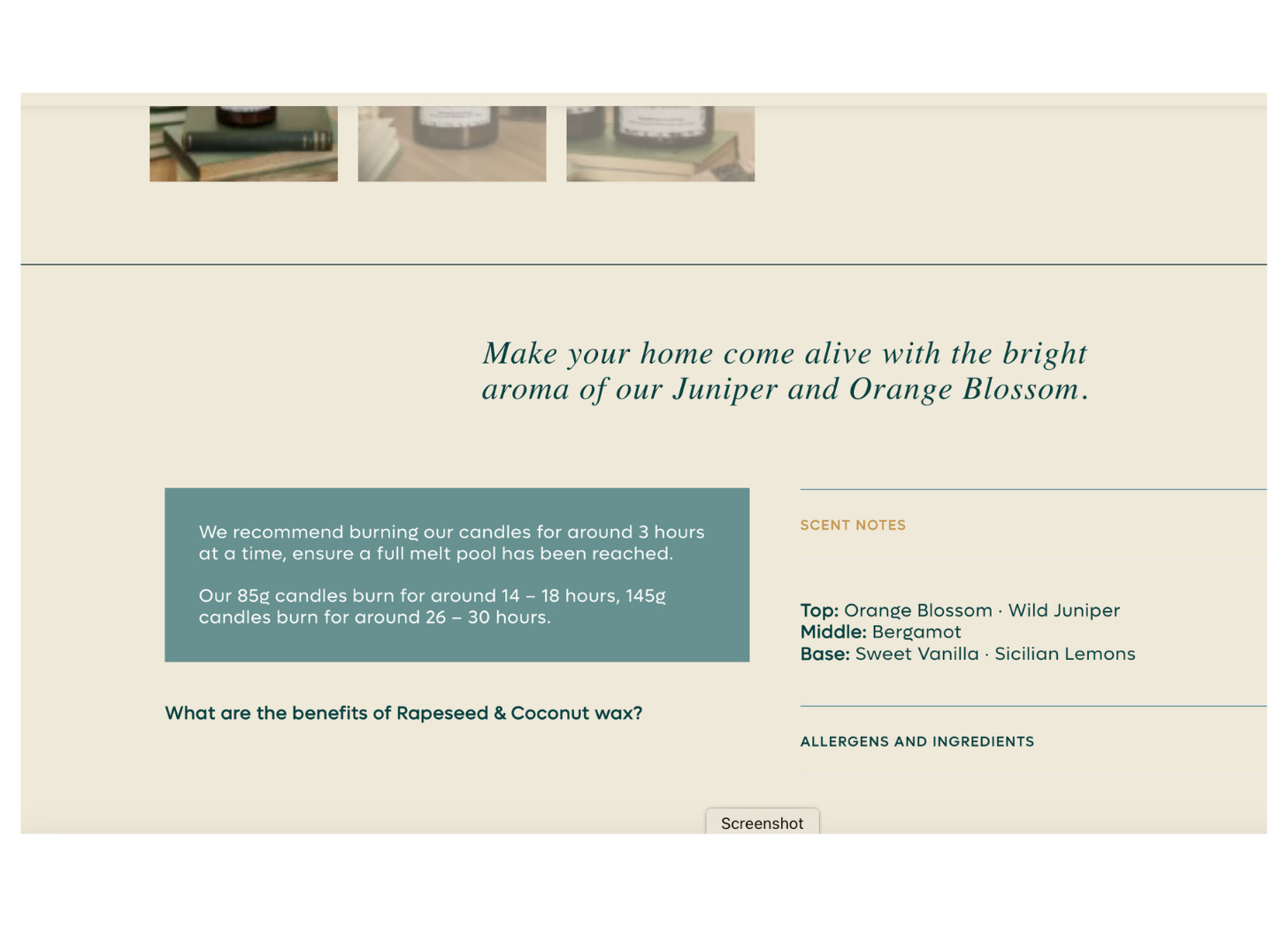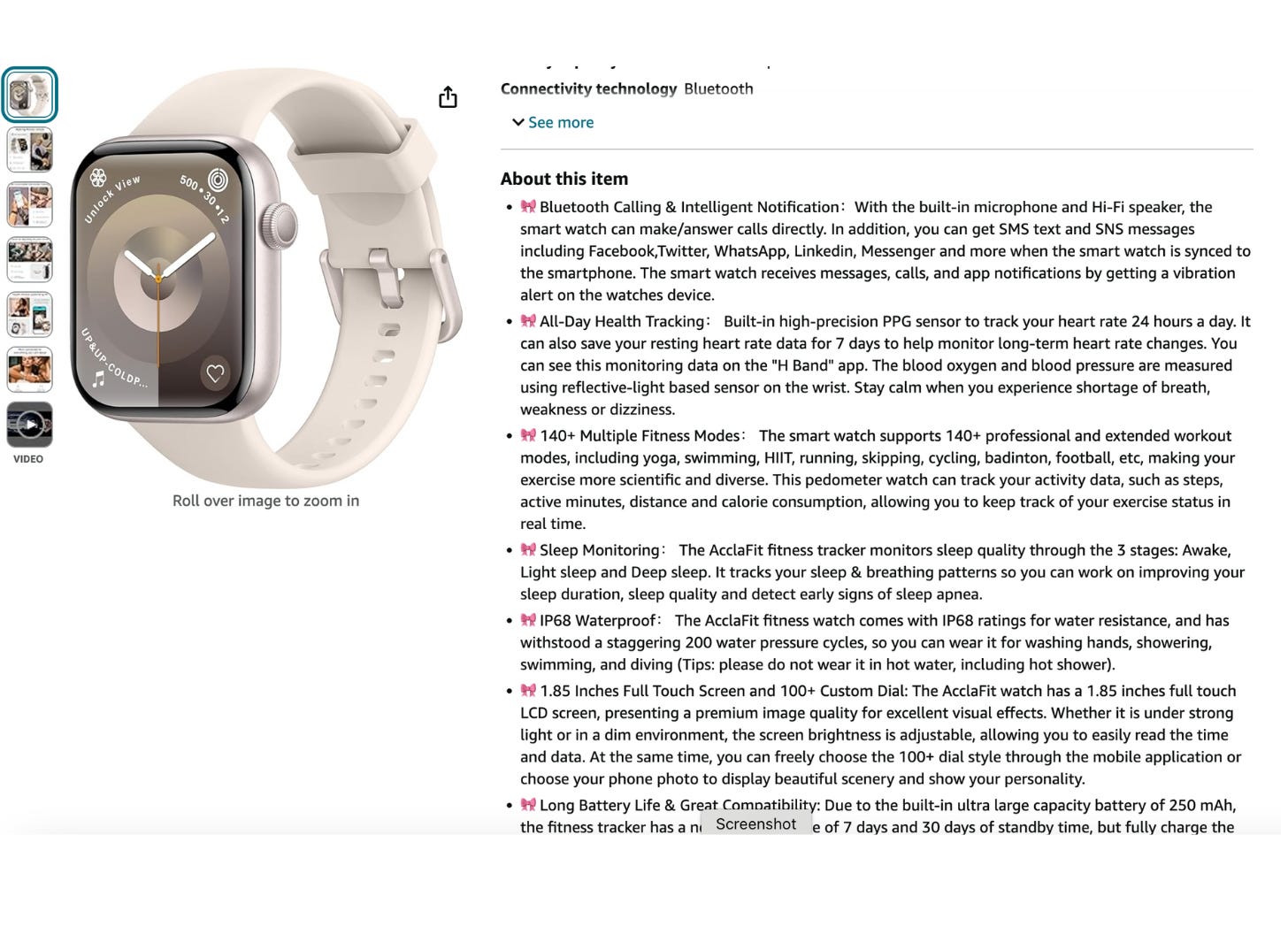How to write product descriptions that don’t bore the pants off your customers
Use these tips to help make the most of an often overlooked part of your web copy
Full disclosure, I’ve written product descriptions for some of the most boring items known to man. Roof tiles, nails, wooden planks, that bit of plastic that goes on the edge of guttering.
There are lots of products where the pizazz isn’t needed. Barry from two doors down who’ll be hanging a picture next weekend doesn’t need to know that the nails he’s buying are coated in something akin to fairy dust or that they shine in the light like a mini moon.
And most shops selling these types of products are practical, down-to-earth, no nonsense. That’s their tone of voice. Writing descriptions that embellish or add some bells and whistles is not always what the audience wants.
But, that doesn’t mean your descriptions can’t be well-written, or that you shouldn’t employ a bit of humour or snazzy writing when appropriate.
Especially when the right words can turn casual browsers into committed buyers.
Think about it. When you shop online, you can't touch, feel, or try the product. Your words have to fill that gap. They need to create vivid images, stir emotions, and answer questions before they're even asked.
And let's not forget the SEO side of things. Well-optimised product descriptions can help your search engine rankings and bring more traffic and potential buyers to your site.
Who are your target audience?
Before those creative juices start flowing, you need to know who you’re writing for.
Identify your audience
Conduct surveys, hold customer interviews, and dig into market research to get a clear picture of who your customers are.
What are their needs, preferences, and pain points? The more you know about them, the better you can tailor your descriptions to resonate with them.
Address their pain points
Your product descriptions should address the specific problems or desires of your target audience.
Granted this is harder when you haven’t got the most exciting product. But put yourself in their shoes and think about what would make them choose your product over the competition.
Highlight how your product solves their problems or makes their lives better or easier.
How to structure your product descriptions
So where to start with your product descriptions?
Start with your headline
Headlines in product descriptions are one area where you should ignore the usual “make it snappy” advice. Why? Because once someone is actually on your site, they’re not searching for “the best pasta alternative that won’t kill your stomach”. They’re probably searching for “gluten free pasta”.
Another example. They’re not searching for “popular liquid that washes dishes and keeps your hands as soft as your face”. They’re searching for “Fairy washing up liquid”.
Call it what it is. Don’t make it so no one can find what they need.
And if you do want to talk about the best pasta alternatives that won’t kill your stomach, that’s what your blog is for.
Use bullet points for key features
Nobody wants to read a dense block of text. It’s boring. Break down the key features of your product into bullet points for clarity and easy scanning.
This format makes it easy for customers to quickly grasp the essential aspects of your product. But just don’t just talk about features. Talk about benefits. That newly designed recyclable bottle? What does it mean for customers?
Or a 10 hour battery life might be talked about like this: "Enjoy uninterrupted music for up to 10 hours on a single charge."
This approach helps your customers see the real-world advantages of your product, making it more appealing and easy to slot into their lives.
Include specifications
Your product descriptions should be detailed. Include all relevant info such as size, material, dimensions, weight and other specifications. The more information you provide, the easier it is for customers to make informed decisions.
It also builds trust and reduces the likelihood of returns from customers who didn’t understand what they were buying.
Address common customer questions
Anticipate the questions your customers might have and talk to your customer services team to find out what questions they get asked most often. Then address these questions in your product descriptions.
This can remove doubts and reduce friction in the buying process, making it a more pleasant and seamless experience for your customer.
Keyword research
Keyword research can be helpful to understand what terms people are using when searching for a particular product. Add them in naturally where it feels appropriate.
Pay attention to keywords for niche products. Don’t just dismiss them because they have low search volume. If you have a bunch of products with low search volume because of how niche they are, that search volume will all add up.
Remember, you want to attract the right audience, not just any audience.
How to use keywords naturally
Once you have your keywords, add them naturally into your product descriptions. Look at where you can use them in your title, headings, and throughout the body text.
Avoid keyword stuffing or shoehorning keywords in–it’s a sure fire way to turn off both your readers and search engines. Aim for a natural flow that is easy to read and relevant.
Optimise meta descriptions and titles
Don’t overlook your meta descriptions and titles. These are critical for SEO and can significantly impact your click-through rates.
From the recent Google search leak, we now know that Google rewrites approximately 80% of descriptions to better match user queries, so you could try deleting some meta descriptions and letting Google put what they want there.
The leak also showed that longer, super-relevant titles with more keywords could outperform shorter, “optimised” titles, because it could increase the likelihood that your page title matches more diverse search intents.
Customer reviews
Customer reviews and testimonials are gold. They build trust and add credibility to your product descriptions, but your product page, depending on how it’s designed, may not be the place to add a 5 paragraph review.
Instead, include snippets of positive reviews and testimonials to show that real people love your product. Also consider a ranking system or review site that is connected to providing social proof, such as Trustpilot or Feefo. These can be incredibly persuasive and can significantly boost conversions.
Highlight awards and certifications
Don’t be shy! If your product has received any awards or certifications, make sure to highlight them. These accolades serve as endorsements and can boost your product’s credibility. They show that your product meets certain standards and has been recognised for its quality.
Use high-quality images
A picture is worth a thousand words, and this is especially true for product descriptions. There’s nothing more annoying than a pixelated image that looks like the product was photographed in someone’s bedroom after falling off the back of a van.
Use high-quality, detailed images that show your product from multiple angles and can be zoomed in on.
Depending on the product, you might want to show it in a stand alone environment, in use, or both!
Use videos where possible
Videos are an excellent way to demonstrate the product in use, highlight its features, and provide a more engaging experience for your customers.
Don’t forget your CTAs!
You might feel it’s obvious, but customers still need to be guided towards the next step. Your CTAs should be clear and action-oriented.
Use strong verbs and make the desired action easy to follow. For instance, "Ready to drive away your dream car today? Get a free quote now!" gives a clear directive and entices the reader to act immediately.
Or simply “Buy now” or “Add to basket”.
Position CTAs strategically
The placement of your CTAs matters too. Position them strategically on your product page to see an uplift in conversions. No customer should be searching for where to hit the buy button or being put off by it being introduced too soon.
Place them where they naturally fit within the flow of your content and make sure they stand out visually.
Follow these tips to create your own product descriptions or use as a checklist for existing ones to see if you’re making the most of them.
🌟 Follow me on Instagram and LinkedIn
🔘 Become a free or paid subscriber to help support this newsletter
☕ Donate a coffee to help fuel my writing
✍️ Find out how you can work with me
🤖 Learn how to use ChatGPT for content creation







Hi Danielle, love this article. I also think production descriptions can be a great place to create trust with the customer. If I see a production description/manual/info and the company addresses how to care for the product and extend its life, that resonates with me. That communicates that they are interested in helping me versus interested in helping themselves get another sale. I'm thinking about clothing companies like Patagonia or The North Face giving detailed instructions on how to care for a garment to extend its life. That's a great way to show customers you care about them by helping them spend. Thanks for the insightful article!